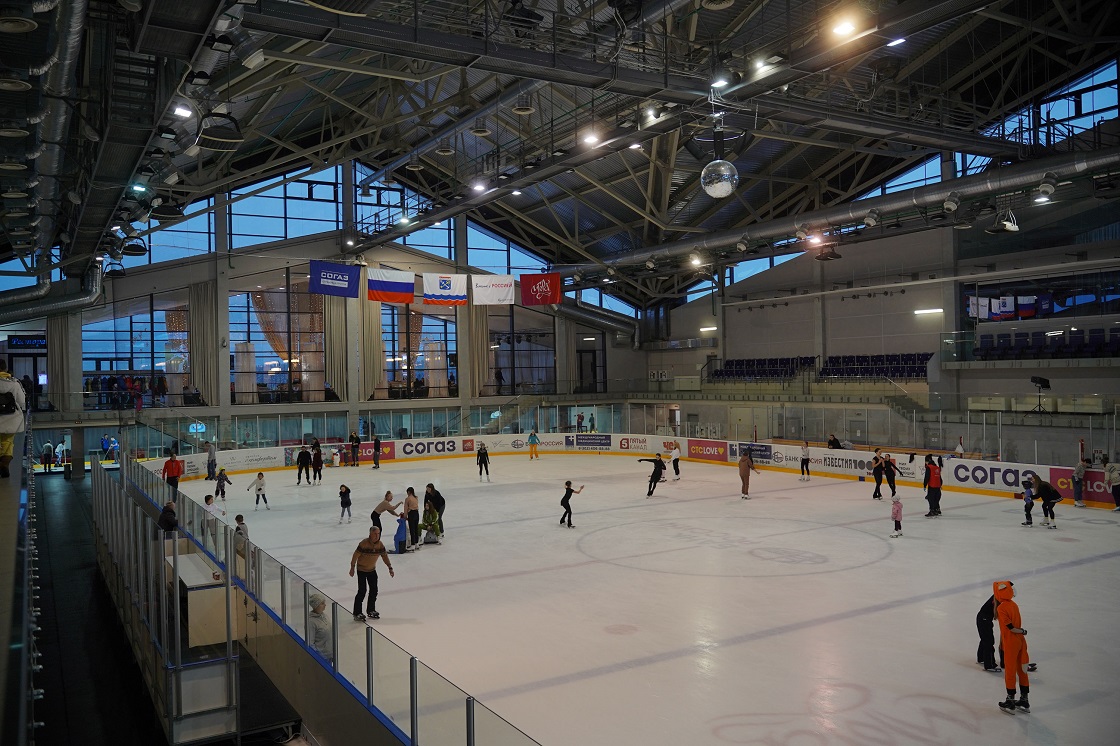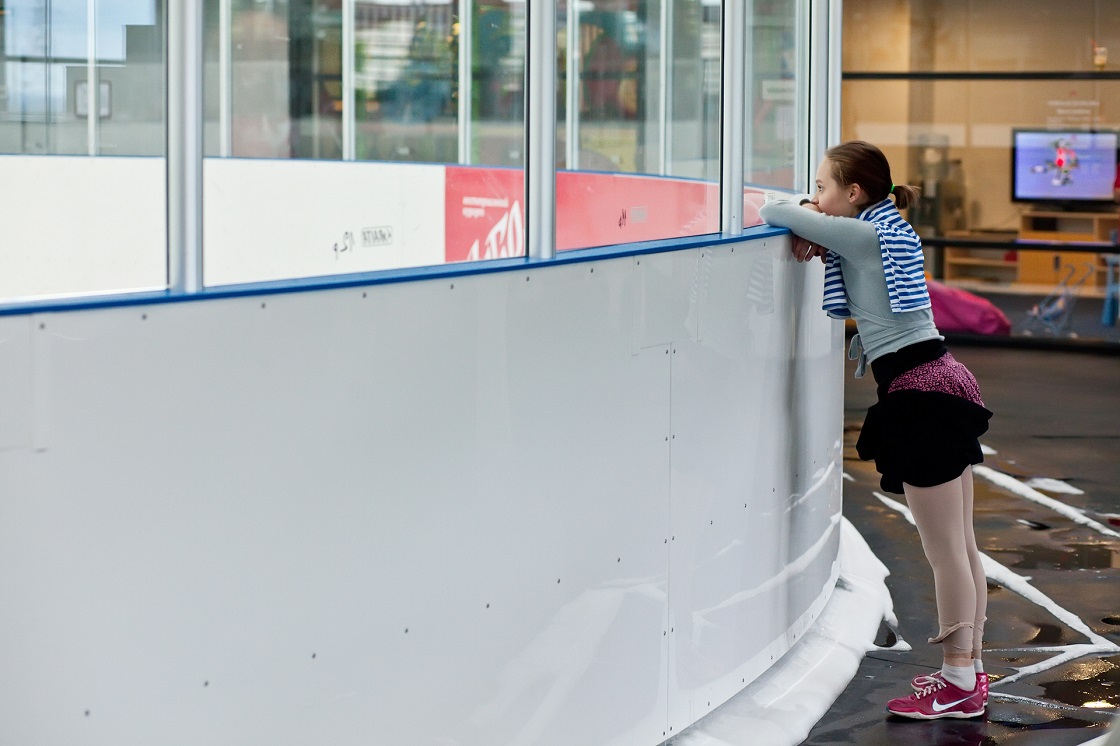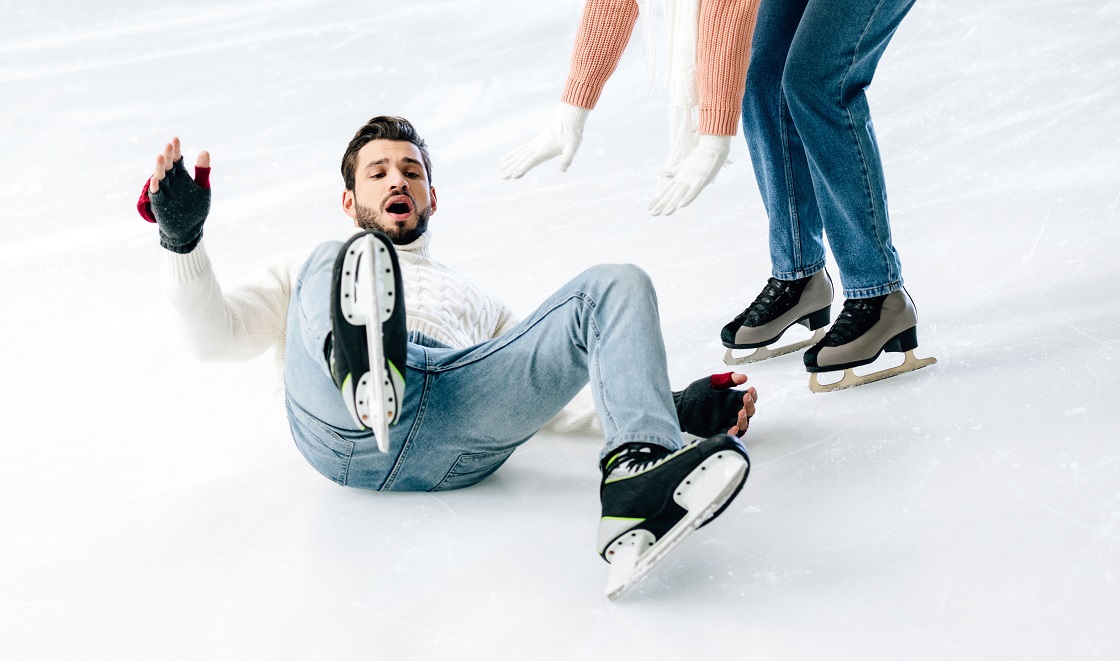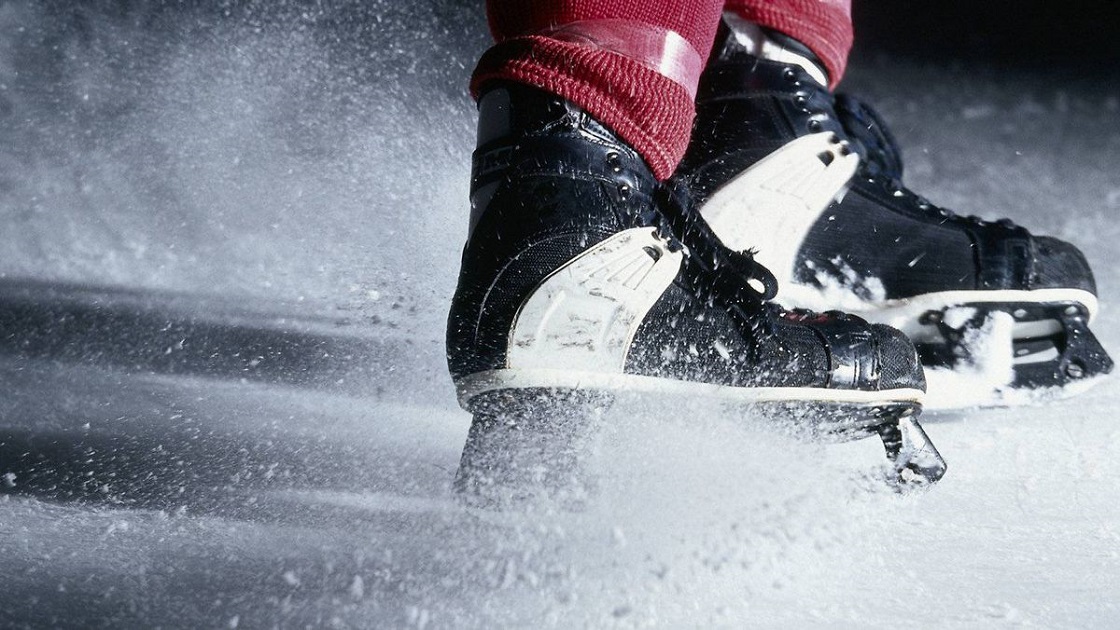How to learn to ice skate as an adult
Reading time: 13 minutes min
09.02.2022
1380
Figure skating is a beautiful and popular sport in our country. There is a myth that it is more difficult to learn to skate in adulthood than in childhood. In fact, it all depends on the desire. Adults can learn to ride just as fast as children by following simple guidelines.

How to start acquainting with the skating rink?
Ice skating is an exciting sport. It gives positive emotions but only with safety precautions. Anyone who decides to learn how to skate is recommended to first learn the rules of behaviour on the rink.
- Ride strictly counterclockwise in a large circle.
- Do not exceed the speed limit.
- Use protection to prevent injury.
- Do not perform actions that can provoke extreme situations.
It is forbidden to go on the ice with a child in your arms. It is forbidden to go on the ice in a state of intoxication, to smoke and drink alcohol. It is forbidden to go on the ice with food or drinks, take animals with you. You can’t visit the rink in ordinary shoes, take sticks and pucks to perform even simple elements of the game of hockey, you can’t perform complex elements of figure skating. Public skating is not provided for any games on ice.

Warm up
Ice skating is a sport. During active training on ice almost all muscle groups work. Therefore, to prevent injuries and pain you need to prepare the body for active work. Before going to the skating rink at least a small warm-up is required, simple exercises are enough.
- Head and neck. A few careful movements to the sides, tilts and rotations of the head clockwise and counterclockwise.
- Arms. Rotation with straight arms in different directions, active movements with arms bent at the elbows and warm-up of the hands.
- Body. Twisting and tilting in different directions.
- Hips. Circular rotation in one direction and the other.
- Legs and knees. A few squats, as well as rotation of the knees in a half squat.
- Ankle. Rotational movements of the feet in different directions with the fingers resting on the floor.
At the end of the warm-up perform several stretching exercises. For example, bending forward with straight legs with an attempt to reach the floor with your hands. An excellent exercise is lunges on each leg in turn. Now you can go on the ice.

Getting ready to go
Preparing for ice skating is all about checking out the right equipment. Skates should be securely laced but not too tightly laced. Athletes usually tighten the lacing in the ankle area but do not squeeze it into the shins. Too tight a fit creates discomfort which makes it difficult to ride.
Details are important - socks should not move out and interfere. It is better to choose special socks designed for sports. Clothing should also be comfortable. It is desirable that it does not hinder movement and is not too voluminous and heavy, otherwise it is not necessary to talk about activity on the ice. Thin jackets, leggings or soft pants are great equipment for training. Gloves or mittens are required. It is better to collect hair under a hat or in a regular bun so that it does not interfere during a fast ride. Also, you can wear a headband.

Skates: buy or rent
Skates are the main element of the figure skater's equipment. They should fit perfectly on the leg. But besides comfort, other criterias are also important; when choosing, pay attention to the details:
- size - it is ideal to choose skates half a size larger if you plan to wear them with a thin toe. A woollen thick sock requires the choice of skates already a size larger;
- material - the best of all is leather. Not soft suede, plastic, but high-quality dense leather that securely fixes the ankle;
- blade sharpness must be checked. It is much easier to ride and learn on sharp skates than on blunt skates. For starters you can ask about sharpening skates for rent, and over time, buy your own skates and periodically sharpen them.
Not all adults learn to skate on ice so that they can regularly practice this sport. Therefore, buying skates for the first training is not always justified. But it's best to check with the rink staff to see if they can offer freshly sharpened blades.
Proper falls: the foundation of the basics
Skating training for beginners begins with mastering the technique of falls. Most beginner skaters fall incorrectly, resulting in injury. Therefore, before starting to master figure skating it is important to understand how to fall correctly.
The fall on the ice is instantaneous but there is almost always at least a few seconds to group up. A person «anticipates» a fall and, with the right approach, he manages to take that position in which the likelihood of injury is minimised and the risk of catching others is excluded.
The first thing to remember is that you should not panic and grab those who are nearby. As a result, everyone will fall and some may be injured.
Secondly, it is important to group so that you fall on your side or on your hip. It is advisable not to stretch your arms and legs in different directions. The worst thing is to fall on your back or knees. Hard ice is a serious strain on the kneecaps.
Thirdly, you need to rise correctly. To begin with, you should get on all fours, then- put one leg on the ice and rest against it with your hands. With a sharp movement the body is pushed forward at the same time the second leg is placed on the ice.
The preparation for skating has passed and it means that you can begin to perform basic movements, which are considered the main ones of figure skating.

First steps on ice
Riding skills come gradually. Lessons for each person take place at their own pace because for some the elements are easier while others will have to work on the technique. But for children and adults the first steps in this beautiful sport look the same.
Firstly, the coach teaches you to stand. It is important to keep your balance on the ice. Feet shoulder-width apart, back straight, arms for convenience can be spread to the side. Light sliding movements of the feet on the ice forward and to the starting position, as well as the transfer of weight from one foot to the other, will help to understand whether the student keeps his balance normally. At the same time the legs should not move apart, the blades of the skates should stand straight, not falling on their side.
The first lesson is mastered - you can walk. Just walk, not slide. Rearrange your legs gradually forward, performing small steps on the ice. Feet should be straight; socks do not wrap inward. Moving slowly and steadily across the ice tells you it's time to move on to the next step.
It's time to master the technique of sliding - the basis of the basics of skating. The legs are slightly bent at the knees, one leg is slightly diagonal to the other. The second leg performs a repulsive movement so that the supporting one begins to slide forward. If everything works out, the legs change and repeat the same thing. Consistent steps help to glide beautifully on the ice. At first at a low speed but as you gain confidence- the speed will increase.
Important! It is strictly forbidden to put your hands in your pockets. They must be free or to the sides so that in the event of a fall they become a reliable safety net against strong impacts on the ice.
Ice braking rules
As soon as you manage to master the slide you need to immediately learn how to brake correctly. There are several ways.
- Turning the leg perpendicular to the direction of movement. The back should be straight, hands free.
- Bringing the toes of the skates together, while the heels diverge, the weight moves to the centre of the ribs. If you push forward a little, the movement stops.
- Rolling out the leg forward perpendicular to the leading one with the blade tilted.

Popular riding techniques
You can learn the first principles of skating in one session. In some cases, adults manage not only to learn how to skate, fall and brake correctly, but also try other techniques that figure skating consists of.
- Scooter - imitates the movements that are performed while riding a scooter. With one foot you need to push strongly forward to complete the slide. The knees are slightly bent and when pushing off, the legs try to straighten out straight back to enhance the effect of the push.
- Flashlight - from the position of the legs together, the socks are bred apart and squat is performed with the weight shifted to the heels. The legs move apart after which the centre of gravity must be moved forward, turn the socks inward and take the starting position. The legs seem to describe a circle, moving the skater forward.
- Sled - for starters. They pick up speed then the legs are shoulder-width apart and perform a shallow squat with arms extended forward. In this position it is possible to drive a little, then level off and pick up speed again.
- Heron - or sliding on one leg. One leg during the movement is raised with a bent knee - the way a stork stands. One of the simplest exercises which is referred to as the basic movements for beginners.
- Turn - performed on the outer edge. At the same time the leg is bent at the knee, the body is tilted in the direction in which it is planned to perform the turn. The second leg is straight. The weight transfer and pushing movement of the straight leg helps to perform rotations.
Adults learn to skate no more difficult than children. A little patience, a positive mood and a good coach will help you master the basics in a few sessions and spend time on the rink for your own pleasure.

